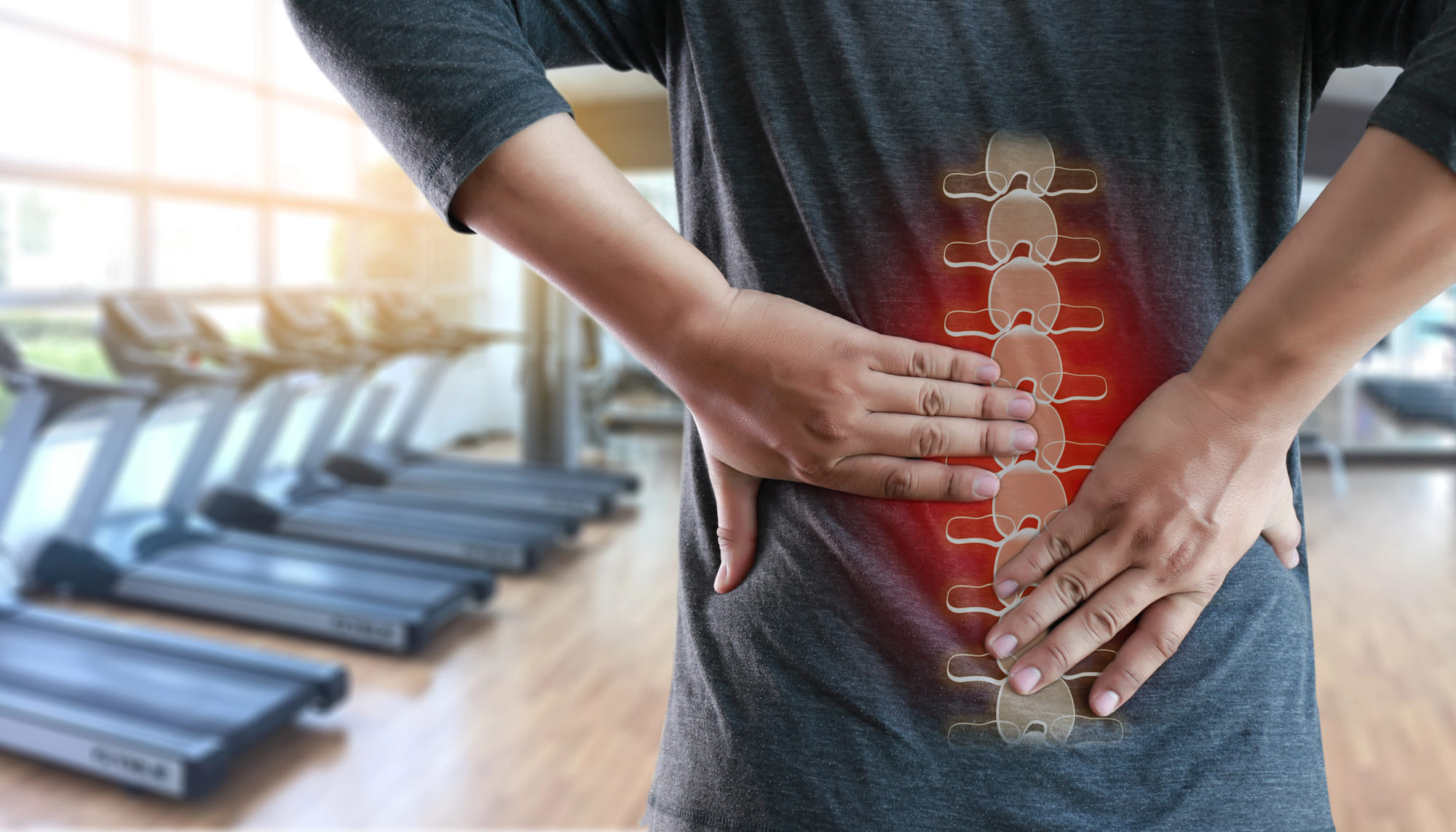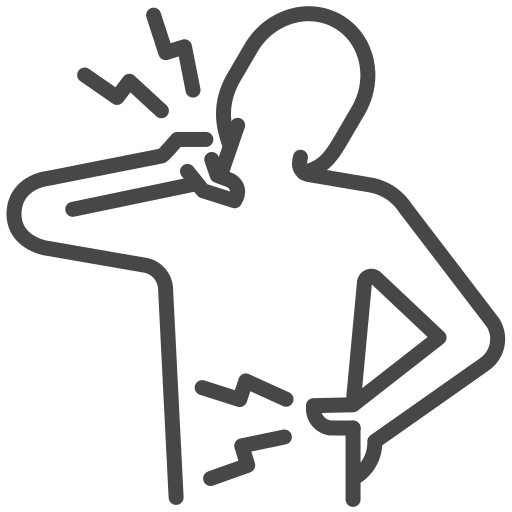Understanding your pain, from diagnosis to treatment.
Back pain can happen at any time. The pain can be temporary or chronic in nature and can prevent you from functioning at your normal activity level. There are common back ailments that most doctors see every day, which are discussed here.
Herniated Disc
Spinal discs have a soft center. The soft center is enclosed around a rubber-like, tougher encasing (annulus.) A herniated disc occurs when this soft-like jelly center pushes through a tear in the annulus. These defects will show up on an X-Ray or CT scan of your spine, which we can use to make a correct diagnosis. At times, a herniated disc may be referred to as a slipped disc or a ruptured disc.
Herniations often occur in relation to age. However, a herniated disc can be the result of excess weightlifting, excess body weight, or in those who have jobs that require heavy or repetitive lifting; although, there are many other reasons.
Symptoms of a herniated disc will depend on where the disc is located along your spine. But most herniated discs occur in the lower back.
The most common symptoms include:
- Numbness or weakness in the arms or legs.
- A sensation of pins and needles in the arms or legs.
- Sometimes burning throughout your arms or legs.
- Problems can also include an unsteady gait.
To treat your herniated disc, we will suggest physical therapy first. If conservative treatments fail, we will consider surgical intervention, which includes removing just the protruding disc.
Sciatica
The sciatic nerve is located in the lower area of your back. The nerve travels through your buttocks and hips, and then down each leg.
Pressure on the sciatic nerve produces radiating pain in the lower extremities, typically in only one side of your body. The cause of sciatica is usually the result of a herniated disc, bone spur or could be from degeneration or narrowing of the spine.
Symptoms are described as a sharp pain along with a burning sensation in one of the legs—starting at the buttocks area and traveling into the leg. You may also experience a tingling sensation followed by burning in pain. The pain can be in one portion of your leg or buttock but could progress to more lasting pain and discomfort. Often, relief comes over time and without surgical intervention.
We see sciatica in our patients who have sedentary lifestyles or jobs that do not require much movement. In these patients, we recommend more activity will provide more relief. However, those who perform repetitive motions throughout the day are not excluded from experiencing sciatica.
Good posture, stretching, and regular movement are all recommended forms of day-to-day conservative treatment. We might suggest physical therapy to learn a few easy stretches you could do while working a sedentary job or after a long day on your feet.
Degenerative Disc Disease
Degenerative disc disease occurs when the spinal discs change in ways that are referred to as degeneration. This diagnosis is common and is almost always associated with chronic back pain. A diagnosis is confirmed with an X-ray, CT scan, or MRI.
There are many reasons one may suffer from disc degeneration. Do you remember the soft jelly-like center we discussed with a herniated disc? Not surprisingly, these discs break down over time, causing the fluid to dry out and crack, resulting in less “cushion” on the spinal column. We typically would see this type of degeneration in our older patients.
For those with job requirements that involve repetitive movement and anyone who played contact sports in their youth, these patients are more likely to suffer from degeneration of the spine.
Treatment options begin with controlling chronic pain through over-the-counter medications or prescription medications and physical therapy. For the most severe cases, we may discuss surgical options.
Back Injury
There are several ways to injure your back. The most common we see here at Jaffe Sports Medicine are:
- Work-related injury
- Sport-related injury- old or new
- Repetitive motion- such as twisting back and forth while working.
- Motor vehicle accidents
- Working out too hard at the gym
Whether you have been dealing with an older injury or new pain, a diagnosis as to why you are having pain will involve imaging, such as an X-ray, CT scan, or MRI.
Once we understand where the problem on your spine is, we can create a treatment plan for you. Our treatment plans include physical therapy, heat and ice therapy, pain management, and surgical intervention, including kyphoplasty.
The interventional pain management team at Jaffe Sports Medicine will address the site of the pain and determine its cause and treat that area as well. Let our medical professionals diagnose your back pain and find the best course of action to treat your discomfort. Call our offices today to schedule your consultation and start the process of living pain-free today.
TEXT BY M. HIATT















